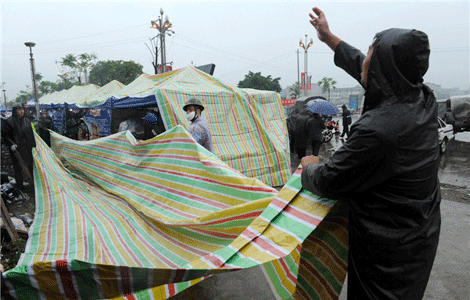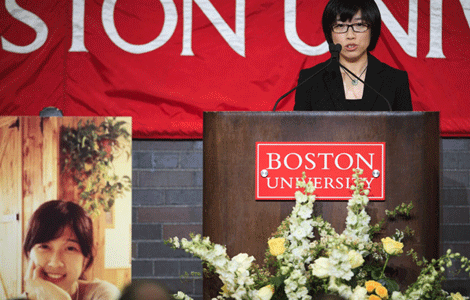Ray of hope for China's troubled solar industry
Updated: 2012-10-29 14:14
(Xinhua)
|
||||||||
"Without a coordinating industrial policy and institution, enterprises need to go to government authorities one by one," said Wang Shun, vice-chairman of Hanergy, China's largest privately-held clean energy firm.
Another key hurdle is the difficulty of connecting solar power plants to China's electric grid. Official figures indicate that one-quarter of the power-generating capacity of new solar plants in 2011 went unused because the plants could not maintain a connection with the grid.
Turnaround?
"For a long time, Chinese solar companies have been fighting on their own. In light of a new market horizon, especially taking into account protectionism in the US and EU, forming strategic partnerships with others might be a wise choice now," said Zhou Lang, a solar expert at Nanchang University.
LDK's sale of shares to a State-backed company also involved High-Tech Wealth, a leading integrated multi-channel sales and marketing group in China.
Sinoma International Engineering, a Shanghai-listed company principally engaged in the manufacture and distribution of mechanical equipment, announced Thursday that it will sign a framework agreement to join LDK in exploring the solar business.
PV panels are installed at solar power plants to generate electricity, and China is still "big in production, small in application" in terms of tapping solar power, said Chu Junhao, a scientist specializing in solar energy and an academic at the Chinese Academy of Sciences.
"China's Energy Policy 2012," a government white paper on energy policy issued Wednesday reaffirmed the country's commitment to developing the full potential of solar power.
By 2015, China plans to boost its solar power generative capacity by sevenfold, according to the paper, which was issued by the Information Office of the State Council.
The China State Grid Corp, China largest power grid operator, announced on Friday a series of measures to facilitate the connection of solar power plants to the electric grid, breaking the bottleneck that has stifled domestic demand for solar panels.
The State Grid will pay for investment related to connecting the plants to the grid as long as the plants meet certain standards, potentially boosting the utilization of distributed solar power plants and related industries.
"The government is changing this now," said Palz. "From next year on I expect China to become a world leader in terms of new installations."

 Relief reaches isolated village
Relief reaches isolated village
 Rainfall poses new threats to quake-hit region
Rainfall poses new threats to quake-hit region
 Funerals begin for Boston bombing victims
Funerals begin for Boston bombing victims
 Quake takeaway from China's Air Force
Quake takeaway from China's Air Force
 Obama celebrates young inventors at science fair
Obama celebrates young inventors at science fair
 Earth Day marked around the world
Earth Day marked around the world
 Volunteer team helping students find sense of normalcy
Volunteer team helping students find sense of normalcy
 Ethnic groups quick to join rescue efforts
Ethnic groups quick to join rescue efforts
Most Viewed
Editor's Picks

|

|

|

|

|

|
Today's Top News
Health new priority for quake zone
Xi meets US top military officer
Japan's boats driven out of Diaoyu
China mulls online shopping legislation
Bird flu death toll rises to 22
Putin appoints new ambassador to China
Japanese ships blocked from Diaoyu Islands
Inspired by Guan, more Chinese pick up golf
US Weekly

|

|







